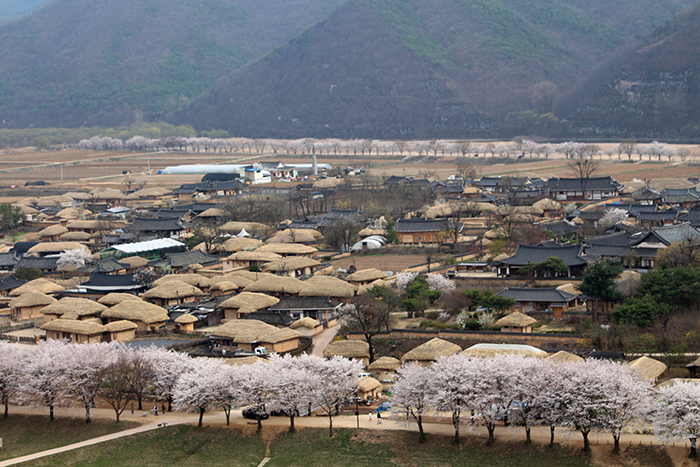
The Hahoe Village in Andong, Gyeongsangbuk-do Province, is one of the few areas around the country that still upholds the traditional shape of Confucian towns and society. A bird's eye view of the Hahoe Village can be seen from the Buyongdae Cliffs (부용대, 芙蓉臺).
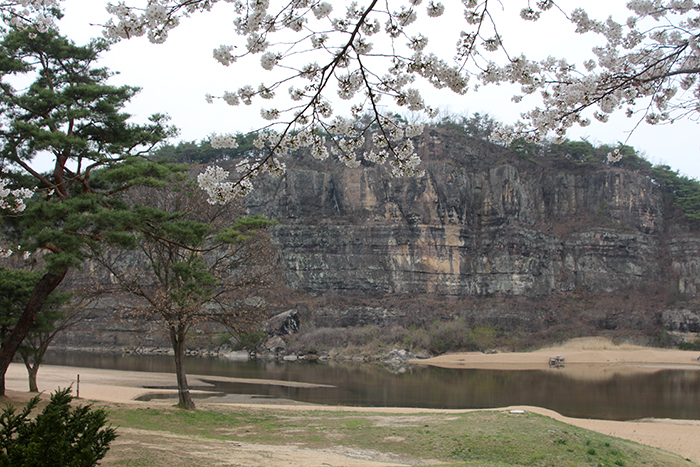
The Buyongdae Cliffs can be seen from the Hahoe Village. These cliffs were formed as the Nakdonggang River eroded away the land over the centuries. If you climb to the top of the cliffs, sightseers can get a bird's eye view of the whole village.
Many old traditional Hanok homes with tiled or thatched roofs are lined up along short stone walls. The village is surrounded by a ridge of mountains and peaks, like a folding screen, and a river that swirls peacefully through the town.
Such old villages make people feel tranquil and comfortable. This scene can be found at the Hahoe Village in Pungcheon-myeon, Andong-si City.
The name “Hahoe” (하회, 河回) is derived from the geographical feature of the village surrounded by the wide, curving river. The village is said to be shaped like a lotus flower, and is known to be located at a propitious site, as it has a narrow, controllable entrance but then is large and wide on the inside, preventing external interventions or natural disasters from occurring. In fact, a scholar from the School of Practical Learning, or silkak (실학, 實學), Yi Jung-hwan (이중환, 李重煥) (1690-1756), whose pen name was Cheongdam (청담, 淸潭), praised the village, saying, “Living near the beach is no better than living near the river. Living on the riverside is no better than living near a well. In general, those who live near a well should live close to a large hill so that they can live there for a long time, through times of both peace or chaos. The best regions in this regard are Dosan and Hahoe in the Yeongnam region.” In short, Hahoe is a good place to live.
Members of the Pungsan Ryu clan (풍산 류씨, 豊山 柳氏) also considered the Hahoe Village to be an auspicious place and lived there over the generations, forming a clan in the village. The Confucian traditions that emphasize the value of loyalty and filial piety have deeply affected the community’s lifestyle. This has led to the traditions of maintaining an official jongga (종가, 宗家), a head family in the clan, and an official jongtaek (종택, 宗宅), that head family's traditional residence. Today, such traditions can be seen in their practice of cherishing and worshiping their ancestors. It can be also seen in their housing of ancestral tablets and in that the families gather together in order to perform the rites at the appropriate times of the year. These ancestral rites are performed at the jongtaek where the head family of the clan continues to live and to carry on the family blood line.
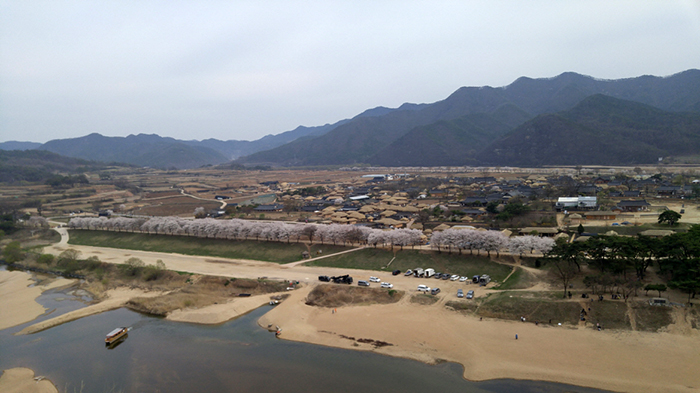
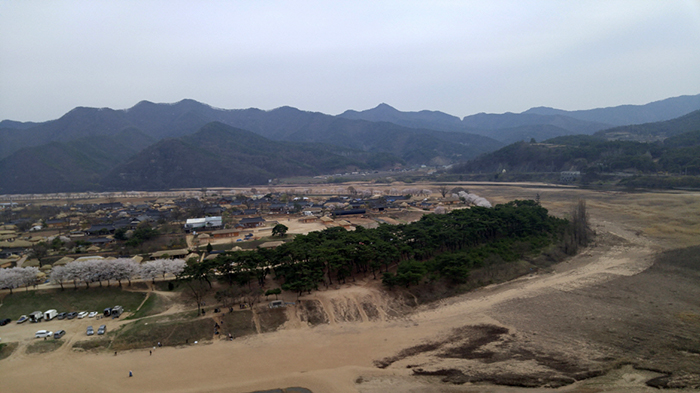
The Hahoe Village is part of Andong City. Looking southward, the northeastern edge of the village is lined with cherry trees in full bloom (top). The northwest edge of the village is home to a pine tree forest, the Mansongjeong (만송정, 萬松亭), planted to prevent flooding and heavy winds (bottom).
The Chunghyodang House (충효당, 忠孝堂) is one of the jongtaek residences that can still be found in the village. It is the home for the head of the clan of Ryu Seong-ryong (류성룡, 柳成龍) (1542-1607), whose pen name was Seoae (서애, 西厓), the most famous member of the Pungsan Ryu clan. He was a Confucian scholar and a leading court official who served at the top post of the Yeonguijeong (영의정, 領議政) during the reign of King Seonjo (1552-1608). After Ryu's passing, his descendants and followers built the Chunghyodang House in honor of his learning and virtue.
Another Hahoe Village jongtaek house related to this family is the Yangjindang House (양진당, 養眞堂). This house was built in memory of Ryu Un-ryong (류운룡, 柳雲龍) (1539-1601), whose pen name was Gyeomam (겸암, 謙唵). He was an elder brother to Ryu Seong-ryong and also served as a court official in mid-Joseon times.
When looking around the village, visitors can see other related signs of the Pungsan Ryu clan, such as the Ogyeon jeongsa House (옥연정사, 玉淵精舍) where Ryu Seong-ryong wrote “Jingbirok" (징비록, 懲毖錄) after retiring as a court official. The book was a history of the Imjinwaeran (임진왜란, 壬辰倭亂), or the Battles in the Year of Imjin, Hideyoshi's invasions of Joseon between 1592 and 1598.
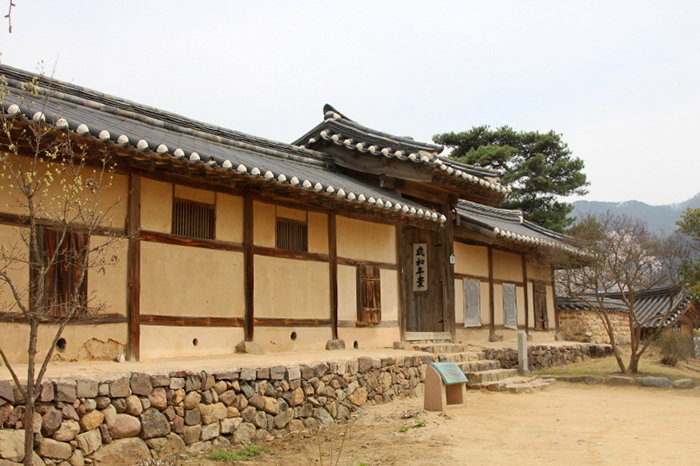
The Chunghyodang House was built by descendants and followers of Ryu Seong-ryong in honor of his academic learning and virtue.
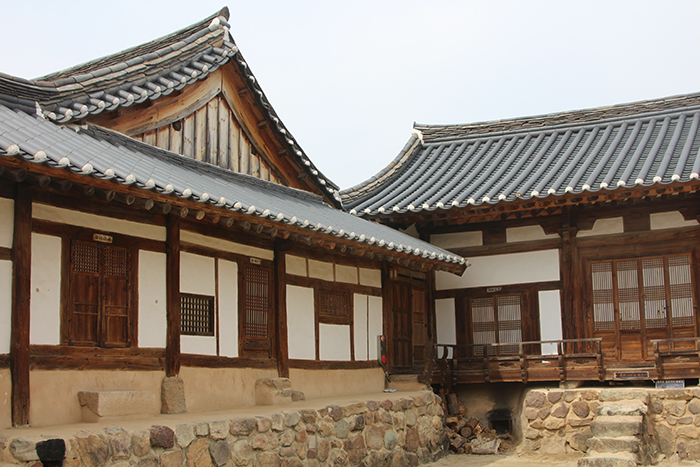
The head family of the Pungsan Ryu clan continues to live at the Yangjindang House.
The ancient Hanok and thatched houses can truly show the actual lifestyle of the times, where the surrounding natural environment and the human habitations were in perfect harmony. A zelkoba tree more than 600 years old stands in the center of the village. The Samsingdang Shrine (삼신당, 三神堂) is located next to the tree where dongje or village tutelary rituals (동제, 洞祭) are held on Jeongwol daeboreum every year, the 15th day of the first month of the lunar calendar. The Samsindang Shrine is a place of folk belief where people gather to worship the goddess Samsin. She is believed to protect the birth and health of their descendants. Houses are located surrounding the shrine. Unlike houses in other villages, each of the houses in the Hahoe Village is built facing a different direction as they are designed to face the river.
Another characteristic of the village is that this is where people reside by generation. In late Joseon times, about 350 households lived in the village. Currently, a total of 127 households reside within the village. Among them, 12 houses are designated as heritage treasures or as important folklore sites.
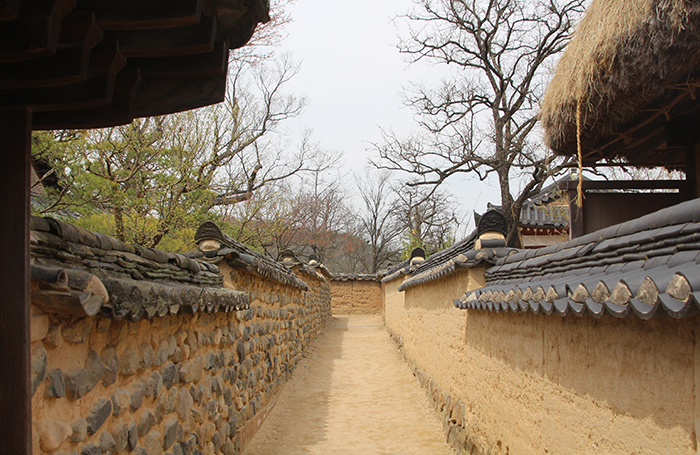
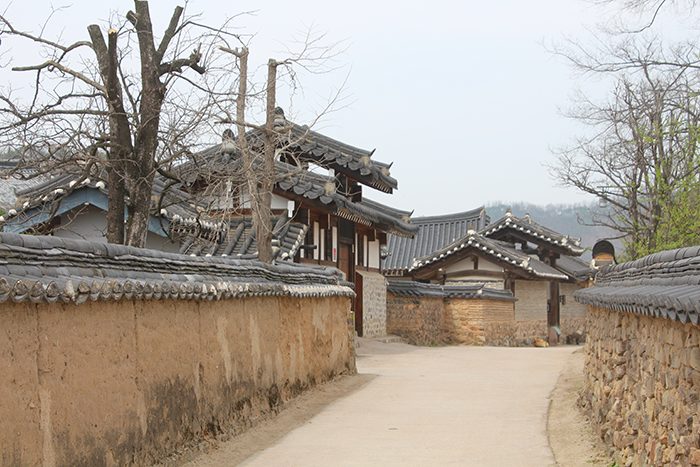
Hanok homes, both with giwa roof tiles and thatched roofs, are in harmony with the short yet neat stone walls of the Hahoe Village.
The Hahoe-tal mask is a special cultural heritage item that can only be seen in the Hahoe Village. Most traditional Korean masks are made from a calabash or gourd bowl, or from paper. People used to burn these masks after performing a mask play. However, unlike such masks, the masks from the Hahoe Village are made from wood. Hahoe masks are sturdy and made to last for a long time.
According to an oral tradition, a young man named Heo created these masks after receiving a divine message. Today, nine kinds of Hahoe-tal masks are on record, including those for a Buddhist monk, the halmi (an old lady), the seobi (scholar), the yangban (aristocrat), the gaksi (bride) and the baekjeong (butcher). These masks are used when performing an outdoor mask play called the Hahoe byeolsingut talnori and which is staged at a traditional performance venue inside the village.
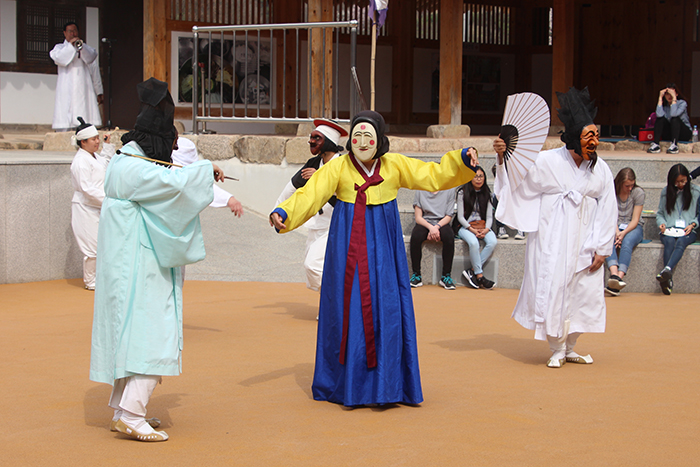
The Hahoe byeolsingut talnori is an outdoor mask play designed to please the gods. The play is a satire, criticizing the upper classes, such as the yangban and seonbi scholars of Joseon society.
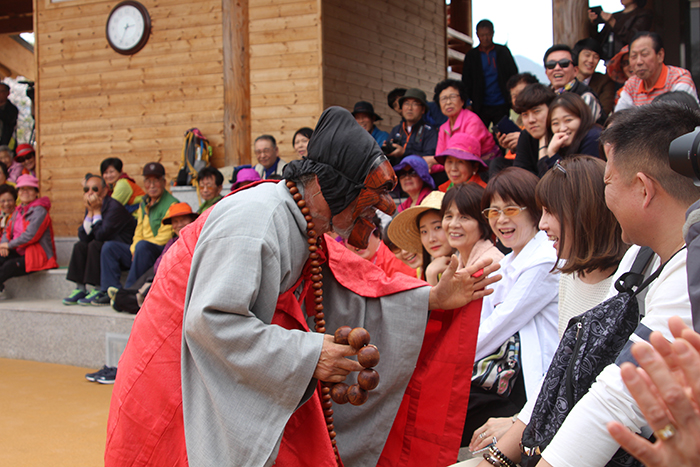
A performer in the Hahoe-tal mask play talks to the audience during a performance.

A Hahoe-tal mask can be made by carving a piece of alder wood.
The cultural and historical value of the Hahoe Village has also won recognition from UNESCO. UNESCO added the Hahoe and Yangdong historical villages to its list of World Heritage sites in 2010. The World Heritage Committee of UNESCO said in its decision document that, “The villages were located to provide both physical and spiritual nourishment from their surrounding landscapes. In terms of the clan villages, the way the attributes truthfully reflect outstanding universal value relates to the ability of the buildings, village layout, setting and dynamic clan rituals to express the way the village houses are an exceptional manifestation of the Joseon political and cultural regimes and the way they were shaped by Confucianism.” It also added that, “The outstanding ensembles of buildings, their sitting, planning and building traditions, are exceptional reflections of the social and cultural systems of the Joseon Dynasty.”
By Yoon Sojung
Korea.net Staff Writer
Photos: Wi Tack-whan
arete@korea.kr